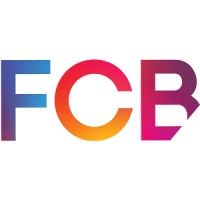
THE CHALLENGES & GOALS:
BMO has a strong track record of championing the advancement of women – from the bank’s longstanding support of women entrepreneurs, to achieving 40% female leadership within the bank itself. In an industry that’s traditionally run by men, for men, BMO stands out as the bank that invests in women. BMO has set out to fight gender bias in the financial system by addressing the root causes of women’s financial disempowerment.
This purpose-driven initiative will build an emotional connection in a low-engagement category by shining a light on a cultural issue and in doing so, highlight a critical need for change. Success will be measured in terms of recall, favourability and engagement.
OBJECTIVES:
Brand Recall: +10 pts increase
Brand Favourability: + 4pts increase
Brand Engagement:
• Drive 24,000 customers to BMOforWomen.com and increase time spent over last year’s campaign
• Increase usage of BMO’s existing hashtag #BMOforWomen
• Increase in usage of internal hashtag #proudtoworkatBMO
THE INSIGHT & STRATEGY:
Women now control 40% of global wealth - but while they are financially more empowered than ever before, their financial confidence hasn’t kept pace. They have been culturally primed to believe that they don’t have the knowledge to manage their own financial decisions.
The majority (55%) of female investors believe they know less than the average investor, compared to only 27% of male investors. Most married women (58%) defer financial planning decisions to their husbands, even if they are the primary breadwinner.
To overcome the confidence gap, we needed to understand its cause. Social listening analysis made the issue clear; women are surrounded by insidious financial stereotypes. Labels like “trophy wife”, “gold diggers”, “shopaholics” and gender norms that encourage “retail therapy.” Even in the classroom, young girls receive unconscious cues that make them doubt their math skills.
Women grow up in a culture that tells them they are bad with money. They are constantly served the cultural narrative that women are reckless, incapable, and ignorant around finances. Is it any wonder that so many of them believe it?
This cultural dynamic defined our strategy; to expose the ingrained financial stereotypes that hurt women’s financial confidence in order to rewrite women’s relationships with their finances.
THE EXECUTION:
The campaign launched with the video ‘Jane’, to show a how a lifetime of negative stereotyping erodes a woman’s confidence with money. The story spotlights seemingly harmless moments to demonstrate their cumulative impact on Jane. The video then flips the script, showing that if we can #bankruptthebias we can help dismantle the myth that women are bad with money.
The next phase was to rewrite the biased narrative that Jane, and all women, encounter. We rewrote the labels with a series of GIFs that re-appropriate biased language and even created a petition to remove gendered definitions from the dictionary.
Finally, we rewrote the model of what a financial expert is. We launched the Chief Allowance Officer, making a young girl BMO’s financial expert who taught other girls financial basics with online videos.
TECHNOLOGY & TOOLS:
Expose the Bias
The use of social listening uncovered financial stereotypes that flood our feeds every day. In order to change the conversation, we had to be on the platforms where these stereotypes exist. The film, shortform social videos, and influencer content exposed the issue and all assets drove to our content hub https://bmoforwomen.com/ourcommitment/ to learn more about this unconscious but harmful bias.
Rewrite the Bias
The campaign used social to also rewrite the bias with GIFs that flipped the meaning of common stereotypes from harmful to empowering, intercepting anyone about to use the label with a new, positive meaning.
To create real, lasting change, we created a petition on change.org that empowers people to advocate with to remove biased language from dictionaries.
USER EXPERIENCE:
Most women experience financial bias, but few are aware of the impact. Our challenge was to both expose and change the bias in a seamless digital experience.
Using short and long-format videos, we deployed a two-pronged strategy based on context and affinity. YouTube targeting allowed us to place our videos ahead of biased content, so we could magnify the problem. For example, a reality show video that showed “trophy wives” or the “Gold Digger” music video. We also used keywords and interests on Twitter that surrounded the same problematic terms.
We also targeted audiences who are more likely to advocate and share BMO’s message by using keywords and interests on twitter that support the solution.
Using Facebook’s Canvas Unit, we were able to deepen engagement by demonstrating not only issue of financial stereotypes, but the solution within one digital experience.
All assets drove to our website https://bmoforwomen.com/ourcommitment/ to further deepen understanding of the societal issue.
SUPPORTING CHANNELS:
A two-minute film with :15 cutdowns on social & pre roll – Sets up the problem.
Paid posts on social – Highlight the need for change.
Influencers – Amplify the story.
GIFs – Take back the stereotypes.
Canvas – Deepens understanding.
Change.org – Creates actionable change.
BMOforWomen.com – Content to engage and demonstrate BMO’s commitment
THE RESULTS & IMPACT:
Brand Reach and Recall:
• Ad Recall +19.8 pts (compared to a financial norm of +6.1)
• 90MM+ impressions
• 50MM views of Jane videos
Brand Favourability:
• Brand Favourability +7.1 pts while financial services norm is only +0.7 pts
• 99.3% positive/neutral social sentiment
Brand Engagement:
• Drove 83,400 customers to BMOForWomen.com a 348% increase in visits compared to our campaign objective
• 42% of users spent more than 15 seconds on the campaign’s content page up from 33% during last year’s campaign
• 109% increase in the use of #BMOforWomen compared to 2019 campaign
• 783% increase in use of #proudtoworkatBMO



